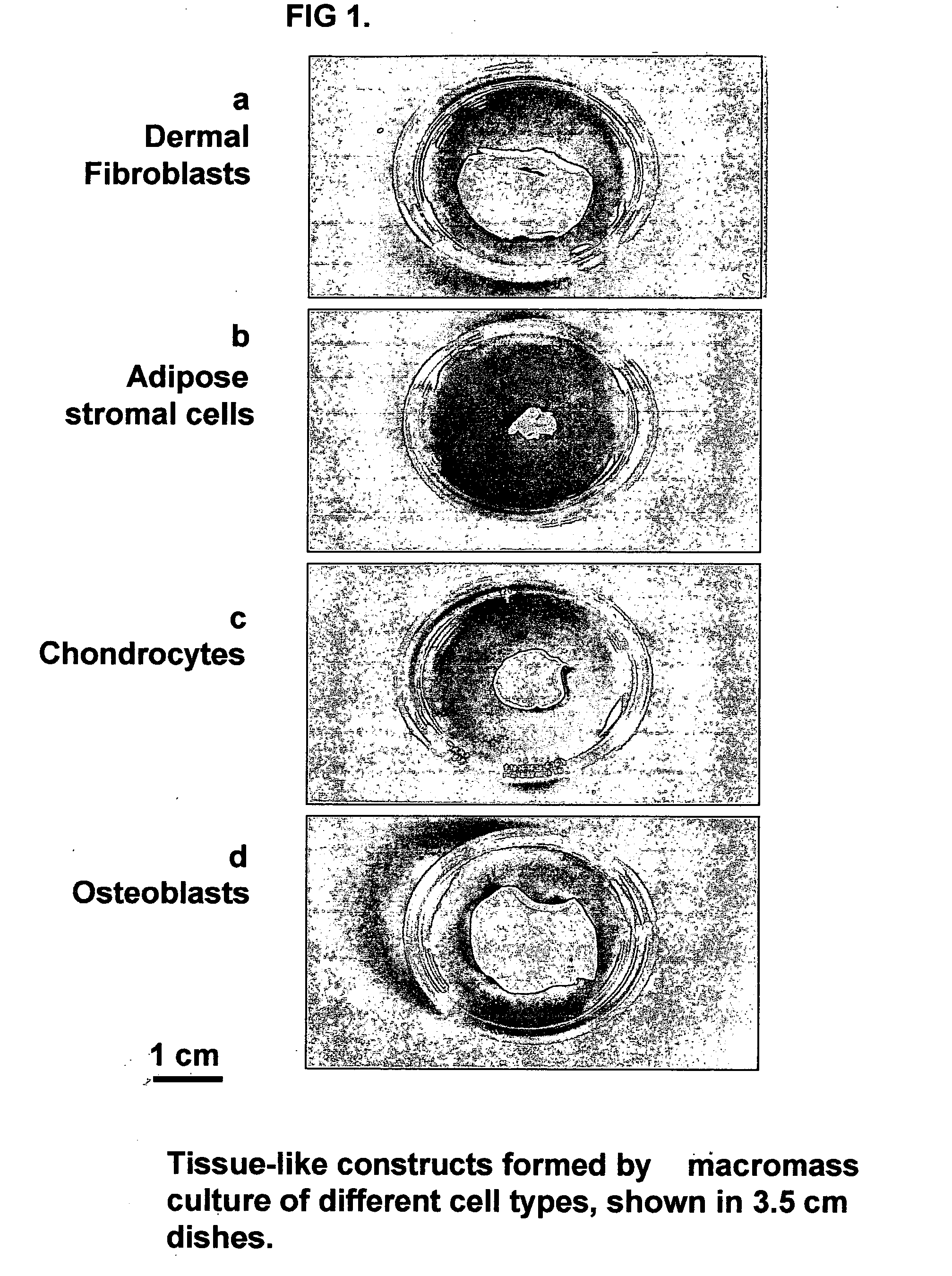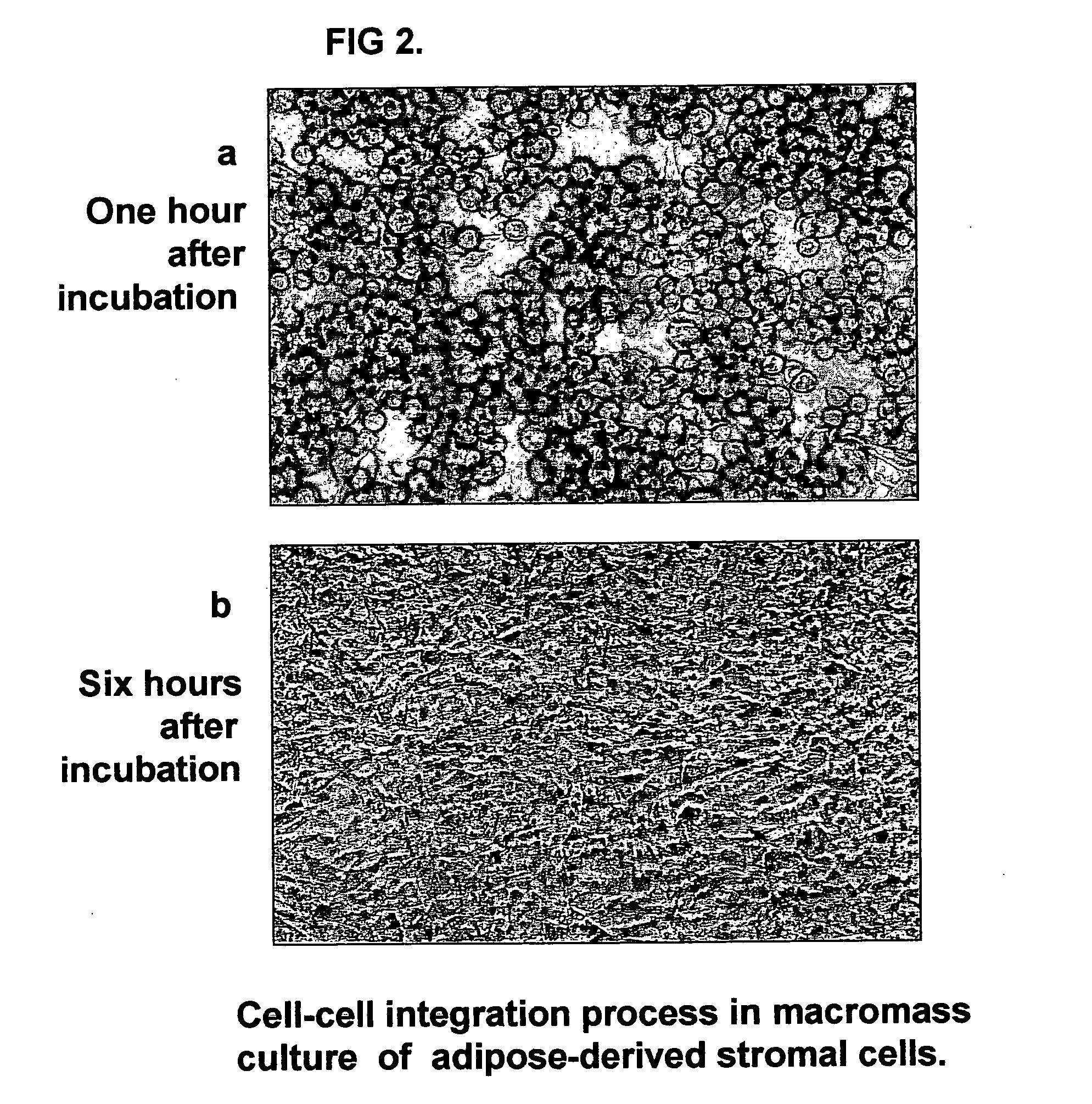Tissue-like organization of cells and macroscopic tissue-like constructs, generated by macromass culture of cells, and the method of macromass culture
a cell and macromass culture technology, applied in the field of tissue-like organization of cells and macromass culture, can solve the problems of limited transplantation technique of organs such as the heart, liver and kidney, and scarce availability of donor organs, and achieve the effect of simple scaling up
- Summary
- Abstract
- Description
- Claims
- Application Information
AI Technical Summary
Benefits of technology
Problems solved by technology
Method used
Image
Examples
Embodiment Construction
[0035] In the present invention, there is provided a method for the assembly of cells into three-dimensional tissue-like organization by macromass culture, and the novel method of macromass culture. There are provided macroscopic three-dimensional tissue-like constructs that are histologically competent, generated by macromass culture of cells. The present invention relates to tissue engineering. More specifically, this invention relates to fabrication of three-dimensional tissue like constructs for possible implantation in the human body as a therapy for diseased or damaged conditions. This invention gives a method for the organization of cells into three-dimensional tissue-like forms and describes the tissue-like forms themselves.
[0036] Fabrication of tissues is a goal important for the replacement of diseased tissues in the human body. Efforts are being made to explore and recruit the tissue-forming abilities of cells for tissue engineering.
[0037] The process of tissue engineerin...
PUM
| Property | Measurement | Unit |
|---|---|---|
| diameter | aaaaa | aaaaa |
| diameter | aaaaa | aaaaa |
| diameter | aaaaa | aaaaa |
Abstract
Description
Claims
Application Information
 Login to View More
Login to View More - R&D
- Intellectual Property
- Life Sciences
- Materials
- Tech Scout
- Unparalleled Data Quality
- Higher Quality Content
- 60% Fewer Hallucinations
Browse by: Latest US Patents, China's latest patents, Technical Efficacy Thesaurus, Application Domain, Technology Topic, Popular Technical Reports.
© 2025 PatSnap. All rights reserved.Legal|Privacy policy|Modern Slavery Act Transparency Statement|Sitemap|About US| Contact US: help@patsnap.com



